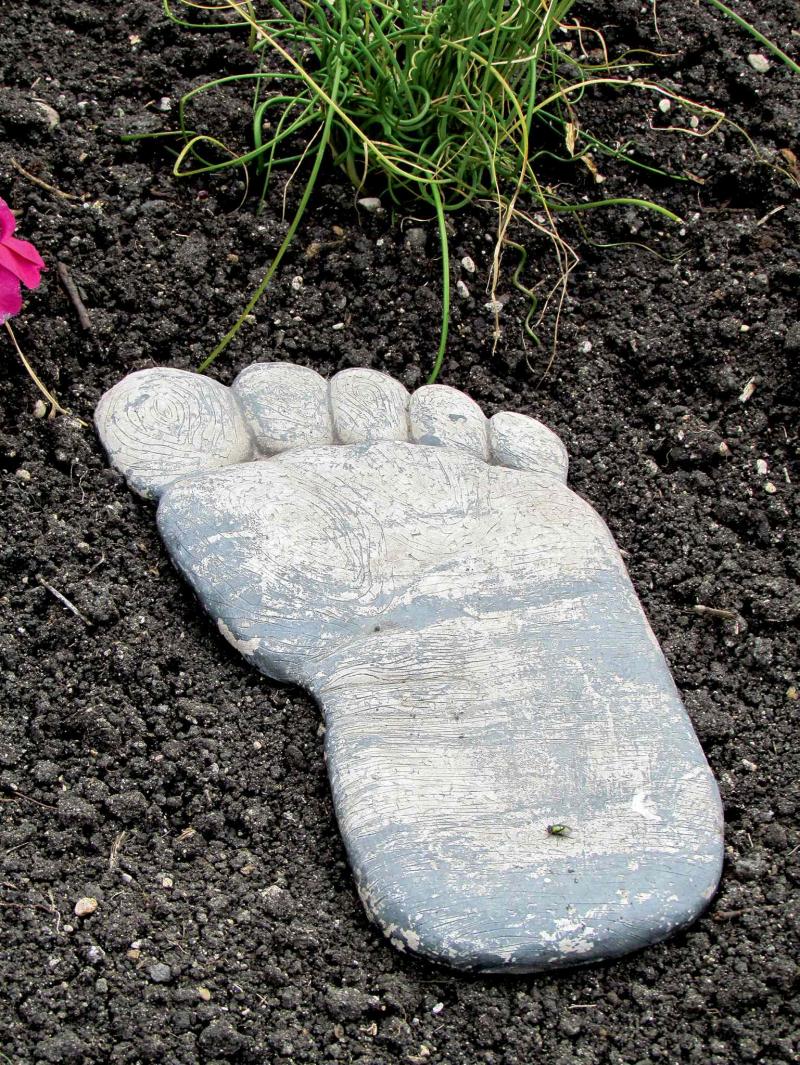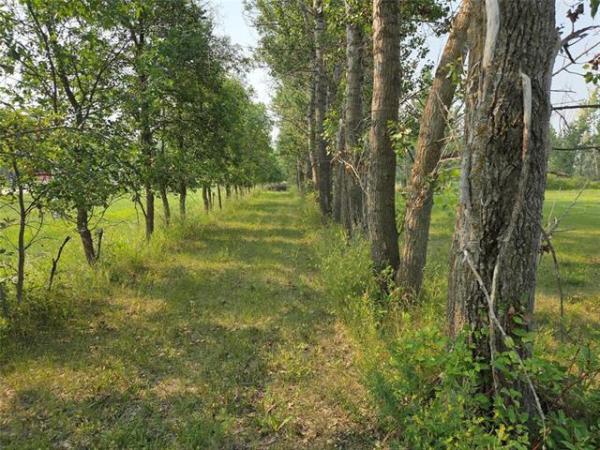

What are you planning to do differently in your garden this year?
With the start of a new year, most gardeners envision a new and better way of doing things. Whether you are fuelled by frustration because of underperforming plants or inspired by the prospect of installing new ones, get to the heart of the matter by first assessing your soil.
The state of your soil may not rate as the sexiest aspect of gardening, but when it's working for you, it's a satisfying experience.
Sparkling eyes, glowing hair, radiant skin -- these are the things we notice first in someone who is glowing with good health. Visit a garden with sturdy, robust plants that are able to achieve their maximum size at maturity, sporting healthy foliage, more numerous, larger blooms or higher yields, then look at the soil. Plants are only as good as the soil they are planted in. It is the interconnectedness between the roots of plants and their ability to access what they need that determines the overall health of plants.
Soil is serious business. 2015 has been declared by the United Nations General Assembly as the International Year of Soils in recognition of soil's invaluable relationship to vegetation and agriculture. A perennial bed or backyard vegetable garden may not figure large in the grand scheme of things, but there is a great deal of life in even the smallest patch of earth, and it is ours to manage as best we can.
You can call it dirt, but even just a handful is teeming with essential living organisms such as bacteria, fungi, earthworms, centipedes and much more. In addition to living organisms, every soil consists of mineral and organic matter, water and air.
Soil is made up of different sizes of mineral and organic particles. The texture of your soil is determined by the proportions of clay, silt and sand, all of which influence soil structure. The strategy to improving one's soil begins with understanding the proportions of its basic components. In our part of the world, the soil is primarily clay and alkaline, a recipe for challenging conditions and yet constitutes some of the most productive soil on the Prairies. Unfortunately, the soil in urban areas is quite often depleted of nutrients.
But let's talk in plain terms about that handful. Can you actually scoop up your garden soil with your hands? Or is it difficult to even slice a spade through? Does it appear rich and crumb-like or is it packed hard and crusting? Does water flow easily or does it puddle on the soil surface? Even if you are satisfied with the soil in some areas of your garden, other areas may need improvement.
Lyndon Penner is the author of The Prairie Short Season Yard (Brush Education, 2014). A landscape designer and horticultural consultant, Penner grew up on a farm in Saskatchewan where a layer of rocks was never too far below the surface of the soil. Planting a single tree could take hours. Penner has planted many gardens and today preaches the benefits of topdressing and mulching to improve the soil's natural fertility. Not just occasionally, but every single year. Interestingly, it is less work than it sounds.
Penner describes a bed of soil in a friend's garden that is so magnificent he would like to lie down in it. He compares it to freshly ground coffee. And yet, when his friend first moved to her property and began working in the hard, compacted clay soil, her spade broke in half. Today her soil is fragrant and rich with nutrients and a joy to work in. Her secret? Consecutive years of faithfully feeding her soil with organic matter.
Penner acknowledges it takes time to amend soil. He longs for an unlimited supply of compost or organic debris with which to fill his wheelbarrow. His recipe for improved fertility consists of compost with added manure, and some kelp meal. He topdresses with 2.5 centimetres of this mixture then adds a 2.5 cm layer of mulch. If the garden is brand new, he increases the depths of each layer by another 1.27 cm.
Penner prefers cedar mulch because of how good it smells but also recommends shredded bark. One of his clients uses only alpine mulch, a very fine textured, aromatic mulch made from composted pine mulch and suitable for mulching around small, delicate alpine plants. Another client gathers fallen pine cones and mulches with those.
A couple of questions quickly arise. Does the topdressing need to be worked into the soil? How long does it take for the mulch to break down before the next layer of topdressing can be applied? Penner knows some gardeners like to use a garden fork to work the topdressing in and around each plant. He doesn't, preferring to leave this task to the worms. The size of the bark chips dictates the rate at which it breaks down.
"It's an astounding process," says Penner, who insists gardeners really don't need to facilitate everything. "These are processes that have gone on since the beginning of our planet. It's a natural occurrence for organic matter to decompose and work its way back into the soil. We're just creating the situation where that can happen."
The following spring or fall, when the organic matter is at least 50 per cent decomposed, Penner applies another thin layer of organic debris, then a layer of mulch and repeats the process the next year and the next, a stacking of layers, so to speak, with a view to feeding the soil, which in turn feeds the plants.
When soil lacks in sufficient water and nutrients, plants are effectively starved. Some plants, such as peppers and tomatoes, have high nutrient requirements. If the nutrients supplied are minimal, then your harvest will be minimal.
The eventual result of adding organic matter is a healthier, more fertile soil with improved texture and aeration and hence, greater porosity. Your soil will be less compacted as water is able to move more freely, but also it will be able to hold a reserve of moisture between the particles for dry periods while allowing a constant flow of air, delivering life-giving oxygen to the root systems of plants.
Let trees do some of the work for you. Allow for an undisturbed layer of leaves each fall in your flower beds, similar to the organic layer on the forest floor that decomposes back into the ground. The blanket of leaves protects the roots and crowns of plants over the winter and encourages beneficial insects such as ladybugs to inhabit your garden.
In the springtime, Penner clears away some of the leaves, but does not remove all of them. In the deciduous forest, he says, the trees are supposed to have leaf mould around their base.
Think about what you are using for traction this winter on your driveway and sidewalk. Salt is damaging to nearby flower beds. Penner suggests using zeolite, a coarse soil amendment made from porous volcanic rock that works well on icy pathways and is excellent for breaking up heavy clay.
Vic Lesser, Manager of Red River Soils, a wholesale supplier, says homeowners in new housing developments face a significant challenge in restoring fertility to their soil. With the topsoil removed and the subsoil severely compacted from heavy building equipment, the remaining soil is inhospitable to plant growth because of poor soil structure and the resulting reduced movement of water and air in the soil.
At the very minimum, a 30-cm layer of quality topsoil will be needed for landscaping a new, undeveloped property. Lesser says that number could be closer to 60 cm to allow for settling and if the desired outcome is for a healthy lawn and a flourishing flower bed. Lesser says good husbandry will pay off and recommends aerating every year.
"A lot of our plants are not indigenous to this area, so they need more nutrients than our clay-based soil may be providing," says Lesser, who has a preference for rock dust because the minerals are absorbed by plants right away without being tied up by other elements.
Make this the year you take all of the right steps to improve your soil.
colleenizacharias@gmail.com
Notice:
The Manitoba Horticultural Association will host its annual convention Jan. 29, 30 and 31, 2015 at the Charleswood United Church, 4820 Roblin Blvd. Visit www.icangarden.com/clubs/mha for a full listing of speakers and garden-related topics.



